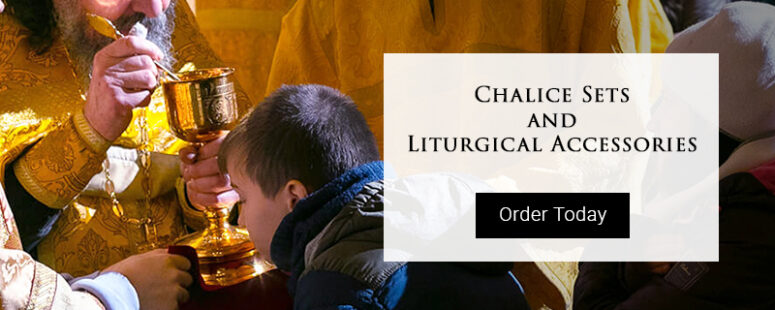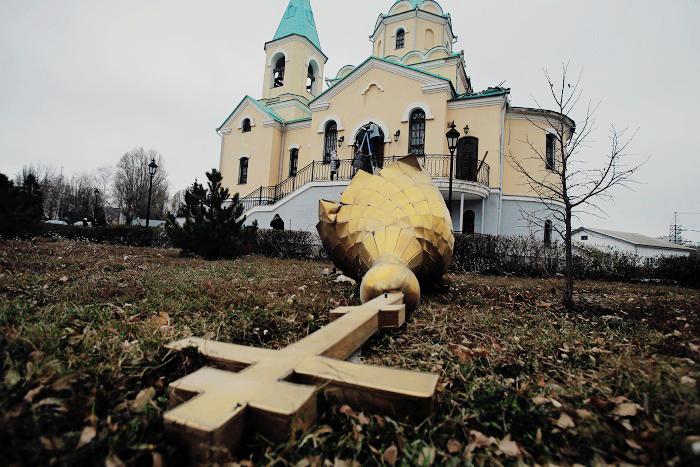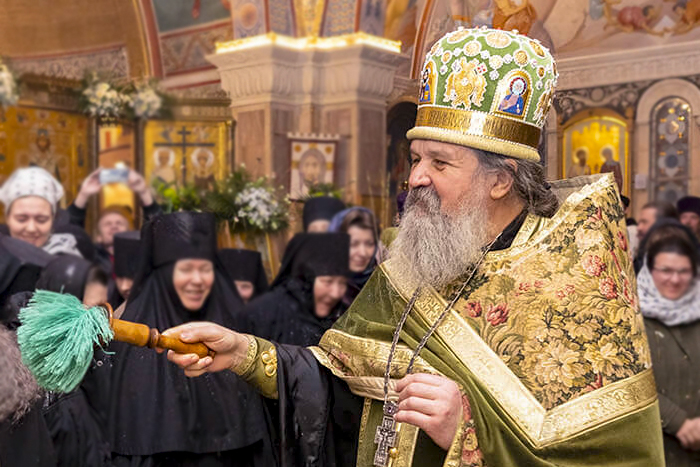
In the modern practice of the Church, Communion is usually performed only in church and only by the priest. In case of acute need, for example, during an illness, a priest can give Holy Communion to a sick person outside the church service. However, the practice of taking Communion at home existed in the early Church, to which there is plenty of evidence.
We find the earliest mentions of home Communion in the first apology of Justin Martyr (second century). St Justin, describing the order of celebrating the Eucharist, says the following: “Then we all rise together and pray, and […] when our prayer is ended, bread and wine and water are brought, and the celebrant […] offers prayers and thanksgivings […] and the people assent, saying Amen; and there is a distribution to each, and a partaking of that over which thanks have been given, and to those who are absent a portion is sent by the deacons”.
The act of bringing the Holy Gifts to homes is described here as a common practice, but a number of reservations remain. In all probability, the deacons brought the Gifts only to those who were absent due to illness or other valid reasons, which is more in line with modern practice and hardly a subject of much speculation about regular home Communion. However, the latter may be true. It remains unknown whether the deacons would give Communion to parishioners immediately upon bringing the Gifts to their homes, or left them for storage and subsequent consumption. The evidence below suggests the latter.
Tertullian (2nd century) speaks of Communion at home not only as an ordinary practice but also as a daily one. In a letter to his wife (Ad Uxorem), he implored her, in the event of his death, not to enter into a second marriage, especially with a pagan. Among other arguments, he advances the following: “Will your husband not know what it is which you secretly eat of before (taking) any food? And if he knows it to be bread, then what will he think of you in his arrogance?” It is noteworthy that the Body of Christ is mentioned here, but not the Blood. There is however an explanation for this too.
Clement of Alexandria, besides mentioning that some bishops allowed the faithful to take home a part of the Body, also writes that believers placed the Body into wine at home, sanctifying it and turning wine into the Blood (Stromata, 2nd century). A similar view of the Eucharist subsequently became characteristic of the Western Church, and later the Roman Catholic Church, where a Communion of only the Body of Christ became possible after the 12th century.
With the end of the persecution against Christians, the history of home Communion became more difficult to trace. It is widely believed that this practice was relevant only during the mentioned difficult period, but this is not so.
According to St Basil the Great (4th century), the Communion outside the Liturgy was preserved only among desert monks, in Alexandria and Egypt. However, Nikephoros Kallistos Xanthopoulos writes in his Ecclesiastical History that St John Chrysostom (4th century), who was then the Patriarch of Constantinople, forbade the practice of home Communion when he personally encountered inappropriate attitudes towards the Gifts. He describes an incident with a noble woman who took a part of the Body of Christ in her hands during the liturgy, brought It home, and then used it for some kind of a witchcraft potion. When St. John found out about this, he ordered to give Communion on a spoon and forbade the laity to take the Holy Gifts into their hands.
This suggests that the practice of home Communion was more widespread than indicated by St Basil the Great. Moreover, from the life of St Basil we learn that after celebrating the first Eucharist with the prayers that he composed, he took communion with one part of the Body, placed one part inside the Eucharistic dove, and took the third one with him to receive Communion before his death. Clearly, the fact that St Basil took Communion privately cannot be viewed as an airtight argument in favor of home Communion being widespread in Caesarea.
Yet, despite the command of St John Chrysostom, home Communion did not disappear from the life of the Church forever. Canon 101 of the Quinisext Council (691-692) forbids giving and receiving the Most Pure Body into reliquaries. Interpreting this as a prohibition of home Communion may in fact be wrong.
Likely, it addressed the well-known ancient tradition of reverently placing sacred items, such as prosphora or the Holy Gifts, inside small decorated arks, called enkolpia. Theodore Balsamon, interpreting this canon, says that during the given period the rich wore enkolpia out of vanity and showed them off before the poor, who took Communion in their hands. Perhaps, the laity was again trusted with the Body of Christ?
This is confirmed by an incident described in the life of the Venerable Theoctista of Paros (9th century). Living an ascetic life in the desert, one day she met a hunter. The saint asked him to bring to her the Holy Gifts, and a year later, he delivered to her the Body and Blood of Christ in a vessel. This episode shows that home communion was still possible at the end of the first millennium.
It is impossible to say for sure why and when the Church abandoned the practice of home Communion. Likely, the possibility of continuing this practice was determined by the “level of conscience” of the Eucharistic life.
In the first centuries, the Eucharist was truly the center of Christian life, hence the many testimonies of home Communion. In times when piety and purity of faith declined, this practice ceased, remaining only among clergymen, monks, or with some reservations (as can be seen from the prohibition of St John Chrysostom and the canon of the Quinisext Council).
The return of this practice to the life of the Church is not impossible. This i evidenced by the experience of the Russian Church in the 20th century, when in times of a cruel persecution, the laity was allowed to keep and partake of the Gifts at home. It is unlikely that such a practice will return to Church life on a permanent basis, since today it is relatively easy to come to church even from the most remote village. However, in extraordinary cases, like the recent COVID-19 lockdown, this is both relevant and possible.





